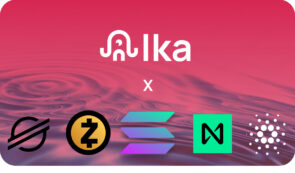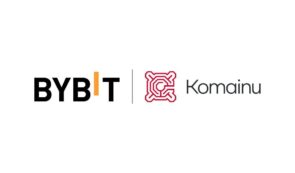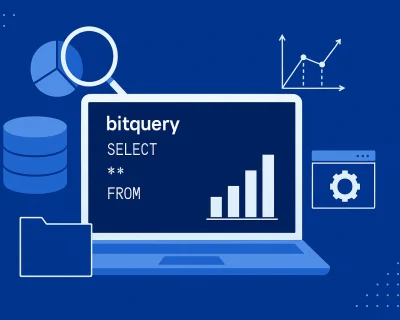Discover the Best 10 Most Profitable Crypto to Mine in 2025
If you are still wondering whether cryptocurrency mining is profitable, this article is for you!
Indeed, cryptocurrency mining has been a lucrative business model for quite some years. Due to the cryptocurrency market’s volatility, you are now wondering if it is still profitable, what exactly to mine, and what crypto mining methods are the best in 2025.
In today’s guide, we will discuss anything you need to know about the most profitable crypto to mine and what mining strategy to use to ensure big profits at a fraction of the effort.
[nativeAds]
The Crypto Mining Space in 2025
The crypto mining landscape started its long development journey once with the appearance of the first crypto, Bitcoin. Since then, the cryptocurrency mining market value has grown exponentially and is predicted to reach $4.95 billion by 2030.
However, as the cryptocurrency mining market grew, the mining difficulty also increased, and as a result, it required specialized mining hardware and mechanisms, like ASICs and GPUs, and electricity costs.
In the US, cryptocurrency mining hardware accounted for 2.3% of the nation’s total electricity demand. On top of this sits the new Biden’s proposal, the DAME tax, which makes cryptocurrency miners pay a 30% tax on electricity.
So, if you’re looking for a profitable cryptocurrency, we could safely say that mining profitability heavily depends on the crypto market value. But on the bright side, the mainstream adoption of cryptos and the emergence of new coins make the world go round.
So, since Bitcoin isn’t the only crypto to mine, let’s discover together what other cryptos are there to start our mining journey with ease.
Top 10 Best Mining Cryptocurrencies of 2025
As always, we did our homework, and we gathered the best cryptocurrencies to mine:
- Bitcoin (BTC);
- Zcash (ZEC);
- Dash (DASH);
- Dogecoin (DOGE);
- Monero (XMR)
- Grin (GRIN);
- Ravencoin (RVN);
- Litecoin (LTC);
- Bitcoin Gold (BTG);
- Kaspa (KAS);
With that being said, let’s see why these cryptocurrencies are so unique and how cryptocurrency mining operations could increase your monthly revenue.
1. Bitcoin (BTC)- The Most Popular Cryptocurrency
As you already know, Bitcoin stands as the original and the most popular cryptocurrency, and to this day, it still stands as the number one option for many cryptocurrency miners. Moreover, since its price reached $69,190.94, it’s no wonder that anyone wonders how profitable is the Bitcoin mining operation.
Not to mention that another Bitcoin halving event will take place soon enough, which will be a game-changer for the cryptocurrency world and all Bitcoin miners, showcasing Bitcoin’s core principles of immutability and scarcity.
Bitcoin Nonspecific Indicators:
- Current Block Reward: 6.25 BTC/block;
- Number of Blocks: 837,253;
- Block Time: 10 minutes;
- Profit/month: $710.99;
The profit is calculated for 390.00 TH/s with a power consumption of 7215.00 Watts and the mining profitability could change according to the price evolution.
Bitcoin Technical Indicators:
- Mining Algorithm: Proof-of-Work;
- Hashing Function: SHA-256;
- Network Hashrate: 616.63 EH/s;
- Options to Mine: ASIC, CPU, and GPU mining.
2. Zcash (ZEC) – Best Crypto to Mine Individually
Zcash was launched in 2016, and since then, it has brought many privacy-enhancing features through its advanced cryptographic techniques, thus becoming ideal for anonymous transactions.
In the meantime, it is becoming one of the best cryptocurrencies to mine. However, mining ZEC is a challenge due to its ASIC-resistant design. As such, before jumping into it, consider mandatory factors, such as the specialized hardware, the right mining software, a Zcash wallet, the electricity costs, and the stability of your internet connection.
Zcash Nonspecific Indicators:
- Current Bock Reward: 2.50 ZEC/block;
- Number of Blocks: 1,787,987;
- Block Time: 1.25 minutes;
- Profit/month: $70.34;
The profit is calculated for 140000.00 H/s with a power consumption of 1550.00 Watts and the mining profitability could change according to the price evolution.
Zcash Technical Indicators:
- Mining Algorithm: Proof-of-Work;
- Hashing Function: Equihash;
- Network Hashrate: 4.19 PH/s;
- Options to Mine: CPU mining and GPU mining.
3. Dash (DASH): A Secure Crypto to Mine
Dash is a Litecoin fork that was released in January 2014, and since then, it has managed to have a market cap of $440.74 million. Over the years, Dash has positioned itself as a secure crypto due to its safe, swift transactions through PrivateSend and InstantSend.
Dash Nonspecific Indicators:
- Current Block Reward: 2.88 DASH/block;
- Number of Blocks: 2,047,467;
- Block Time: 2.50 minute;
- Profit/month: $315.01;
The profit is calculated for 1286 GH/s with a power consumption of 3148 Watts and might change according to the price evolution.
Dash Technical Indicators:
- Mining Algorithm: Proof-of-Work;
- Hashing Function: X11;
- Network Hashrate: 3.13 PH/s;
- Options to Mine: ASIC, CPU, and GPU mining.
4. Dogecoin (DOGE): The Father of The Meme Coins
Dogecoin, created by Billy Markus for fun, is a peer-to-peer cryptocurrency with a strong performance in the altcoin market. It has set numerous records and continues to grow.
Dogecoin, created by Billy Markus for fun, is a peer-to-peer cryptocurrency with a strong performance in the altcoin market. It has set numerous records and continues to grow.
Doge serves as a usable digital currency for storage and transactions. At the time of writing, the Dogecoin mining process could be profitable for some miners. However, the profitability of Doge mining can fluctuate over time based on changes in these factors and the increasing difficulty of mining.
Also, surprising or not to some people, Dogecoin is currently the crypto with the largest market cap in this top. Compared to how the crypto market has been going since the beginning of 2023, Dogecoin is one of the best cryptocurrencies you can mine.
Doge Nonspecific Indicators:
- Current Block Reward: 10,000.00 DOGE/block;
- Number of Blocks: 5,153,545;
- Block Time: 1 minute;
- Profit/month: $394.12.
The profit is calculated for 9500 MH/s with a power consumption of 3425 Watts and might change according to the price evolution.
Doge Technical Indicators:
- Algorithm: Proof-of-Work;
- Hashing Function: Scrypt;
- Network Hashrate: 834.31 TH/s;
- Options to Mine: ASIC, CPU, and GPU mining.
5. Monero (XMR): Beginner-Friendly CPU Mining
Monero (XMR) is a decentralized, open-source cryptocurrency focused on privacy and anonymity. It uses “ring signatures” to conceal the sender’s identity in a transaction and “stealth addresses” to hide the recipient’s identity.
Mining Monero uses a Proof-of-Work algorithm and the Equihash hashing function to secure the network and validate transactions. It is designed to resist an ASIC mining machine, as this specialized mining equipment affects decentralization.
This way, Monero is less susceptible to centralization and more accessible to miners using GPUs or CPUs.
XMR Nonspecific Indicators:
- Current Block Reward: 0.65 XMR/block;
- Number of Blocks: 3,117,882;
- Block Time: 2 minutes;
- Profit/month: $27.00.
The profit is calculated for 54 KH/s with a power consumption of 280.00 Watts and might change according to the price evolution.
XMR Technical Indicators:
- Algorithm: Proof-of-Work;
- Hashing Function: RandomX;
- Network Hashrate: 2.00 GH/s;
- Options to Mine: CPU and GPU mining.
6. Grin (GRIN) – Best Cryptocurrency to Mine for Private Transactions
Grin was launched in 2019 aiming to solve any privacy and censorship issues, and since then it operates on two mining algorithms:
- Cuckatoo32+: an ASIC-friendly algorithm;
- Cuckaroo29: an ASIC-mining resistant algorithm;
As a result, you can mine Grin with both an ASIC and a GPU. Moreover, this cryptocurrency mining doesn’t require any substantial initial investment, thus making it appropriate for a larger pool of users.
GRIN Nonspecific Indicators:
- Block Mining Reward: 60 GRIN/block;
- Number of Blocks: does not have a maximum supply;
- Block Time: 60 seconds;
- Profit/month: $43.32.
GRIN Technical Indicators:
- Algorithm: Proof-of-Work;
- Hashing Function: MimbleWimble;
- Network Hashrate: 8.57 GH/s;
- Options to Mine: ASIC mining and GPU mining.
7. Ravencoin (RVN) – Best Beginner Cryptocurrency to Mine
Ravencoin was developed in 2018 from a Bitcoin hard fork, and since then, this crypto has experienced increased endorsements due to its unique features, such as the mobile wallet and RVN voting power.
Not to mention that it is an active crypto coin on significant exchanges, thus showcasing its high liquidity nature. Additionally, mining Ravecoin is relatively attractive to its miners due to its KawPow protocol and the high mining rewards.
Also, mining Ravecoin using a Central Processing Unit or a Graphics Processing Unit is more affordable than ASIC miners.
RVN Nonspecific Indicators:
- Block Mining Reward: 2,500.00 RVN/block;
- Number of Blocks: 3,261,343;
- Block Time: 1 minute;
- Profit/month: $42.77.
The profit is calculated for 350.00 MH/s with a power consumption of 2900.00 Watts and might change according to the price evolution.
RVN Technical Indicators:
- Algorithm: Proof-of-Work;
- Hashing Function: KawPow;
- Network Hashrate: 6.11 TH/s;
- Options to Mine: CPU mining and GPU mining.
8. Litecoin (LTC) – Best Group Crypto to Mine
Litecoin is a peer-to-peer cryptocurrency known for being the silver to Bitcoin’s Gold, promising faster transaction speed and lower mining difficulty.
Moreover, this is another Bitcoin hard fork cryptocurrency boasting robust functionalities, being one of the top 10 most profitable coins. Due to its Scrypt protocol, LTC requires GPU mining hardware, and as a result, 74.1 million Litecoins have been mined out of a maximum of 84 million.
LTC Nonspecific Indicators:
- Block Mining Reward: 6.25 LTC/block;
- Number of Blocks: 2,660,674;
- Block Time: 2.50 minutes;
- Profit/month: $147.56.
The profit is calculated for 9500.00 MH/s with a power consumption of 3425.00 Watts and might change according to the price evolution.
LTC Technical Indicators:
- Algorithm: Proof-of-Work;
- Hashing Function: Scrypt;
- Network Hashrate: 995.61 TH/s;
- Mining Process: ASIC miners and GPU miners.
9. Bitcoin Gold (BTG) – Best Crypto for Individual Miners
Here is a crypto that aims to democratize Bitcoin mining and use specialized hardware, thus using Equihash instead of Proof-of-Work. Launched in 2017, this Bitcoin hard fork was designed for GPU mining. As a result, mining Bitcoin Gold become profitable in 2024.
BTG Nonspecific Indicators:
- Block Mining Reward: 6.25 BTG/block;
- Number of Blocks: 836,740;
- Block Time: 10 minutes 22 seconds;
- Profit/month: $239.43.
The profit is calculated for 1180.00 H/s with a power consumption of 600.00 Watts and might change according to the price evolution.
BTG Technical Indicators:
- Algorithm: Proof-of-Work;
- Hashing Function: Equihash;
- Network Hashrate: 6.18 MS/s;
- Mining Process: ASIC, CPU, and GPU mining.
10. Kaspa (KAS) – Among the Most Profitable Mining Coins
For those who need to become more familiar with Kaspa, this cryptocurrency is considered the fastest, most open-source, decentralized, and scalable Layer-1 coin globally. KAS is becoming the people’s coin through its blockDAG, the digital ledger that enables parallel blocks and instant transactions.
Moreover, mining Kaspa has been at the top of miners’ minds, especially for ASIC miners looking to boost their monthly revenue.
KAS Nonspecific Indicators:
- Block Mining Reward: 123.47 KAS/block;
- Number of Blocks: 242,231;
- Block Time: 2.27 seconds;
- Profit/month: $45.02.
The profit is calculated for 220,5 GH/s with a power consumption of 300 Watts and might change according to the price evolution.
KAS Technical Indicators:
- Algorithm: Proof-of-Work;
- Hashing Function: kHeavyHash;
- Network Hashrate: 197.4351 PH/s;
- Mining Process: ASIC and GPU mining.
What is Cryptocurrency Mining?
Now that all this is clear regarding the best cryptocurrency to mine let’s move on to the theoretical part to understand the basics of cryptocurrency mining.
In the most straightforward words, crypto mining is the process of solving complex mathematical equations to validate crypto transactions. For every new crypto mined, the users who participated in the process are rewarded with a fraction.
Contrary to general belief, mining crypto doesn’t mean creating a new coin but releasing one from the total supply. Most crypto projects have limited coin supplies, leading to an increase in value as they become rarer, like gold.
Crypto mining exists because developers wanted to find a way to verify transactions while stopping the most common issue associated with digital currencies – double-spending.
In short, double-spending occurs when a bad actor disrupts the blockchain and spends the same cryptocurrency units twice. As it tempers with the allocation of funds on the entire blockchain, the double-spending event may even impact data within crypto wallets.
However, once crypto miners validate a transaction, the coins implicated cannot be spent again by the same user. It is as simple as it sounds.
Another misconception is that users need comprehensive technical knowledge to mine, which is not entirely true. Computers solve the required equations for validating transactions, so all miners need are sufficient hash power and a bit of technical knowledge.
Now that we have covered crypto mining let’s see how many types of cryptocurrency mining there are.
[nativeAds]
2 Types of Crypto Mining Operations
When it comes to mining cryptocurrencies, some people are interested in the computer components responsible for the process of mining, while other people are interested in the methods used.
Whichever side you find yourself on, we explain each type of crypto mining below.
1. The Crypto Mining Operations
Generally, there are three types of mining hardware you can use:
- ASIC – Application-Specific Integrated Circuit;
- GPU –Graphics Processing Unit;
- CPU – Central Processing Unit.
Each of them got terrific results over the years, but the answer to “Which one is better” depends on how much you are willing to invest to start mining. Additionally, specific cryptocurrencies that are highly profitable to mine use ASICs, whereas others use GPUs.
Furthermore, you need to consider the space available for the mining hardware equipment, the profit you expect to have, and the cryptocurrencies you want to work with.
So, let’s see what this is all about.
Application-Specific Integrated Circuit (ASIC) Mining
As we can see from the name, ASIC is an application-specific integrated chip built for specific use.
Those chips built mainly for crypto are designed to mine a specific cryptocurrency. For example, you can only mine Bitcoin with ASIC with a Bitcoin ASIC miner.
In terms of performance, ASIC is superior to GPU or CPU, having the ability to run 100,000 times faster than the best. And, of course, that leads to significant profits since the mining rewards are distributed to the first crypto users who validate a transaction.
Of course the power output is also the main reason ASIC is predominant in Bitcoin mining.
Looking at whattomine.com, profits can vary from a couple of dollars a month to a few thousand. Ultimately, the profit will depend on the coins you mine, the quality of the hardware, and various market factors such as price evolution.
For example, large mining companies such as Riot Blockchain or Argo Blockchain use these types of ASIC-based mining.
When it comes to affordability, it depends on the brand, model, and the way it was developed. For example, a standard ASIC such as Antminer s17 costs around $2,000 and can generate 60 TH/s.
When you read about all that, you probably wonder why people are willing to buy CPU and GPU at a higher price for lower performance and profitability.
The answer is quite simple, though. Not all cryptocurrencies allow ASIC mining. Also, you are restricted from mining the cryptocurrencies using the algorithm for which your ASIC is built.
Many cryptocurrency developers resorted to restricting ASIC miners (like Vertcoin or Monero) to encourage the network’s decentralization.
Also, it’s not all pink regarding ASIC. While the cost/performance ratio is desirable, it has a short lifespan and is not upgradeable.
Graphics Processing Units (GPU) Mining
GPU, the Graphics Processing Unit, is your computer’s video card.
GPU mining isn’t as powerful as ASIC. For example, an NVIDIA GTX 1660 Ti has a hash rate of 26 MH/s and costs around $300.
However, GPU miners are very flexible and able to mine different coins, allowing you to switch between cryptocurrencies.
In terms of profitability, it’s alright. Depending on the cryptocurrency, it can vary between $30-$700/month.
However, despite its complex computation, there are some downsides too.
First of all, it consumes a lot more power than ASIC. Second, redeeming your investment might take a while because a pre-made GPU mining rig can be found at around $3,000.
Central Processing Unit (CPU) Mining
The Central Processing Unit (CPU) was the initial method of crypto mining, but as you might have guessed, it requires updating.
It’s no wonder CPU mining is extremely slow, with an average hash rate of 0.7 MH/sec, which is inferior to GPU and ASIC.
There are little to no chances of succeeding in validating transactions with it. And if you do, you may have a profit of a maximum of a few dollars a month.
If we take a look at mobile mining, things look even direr.
Its $300 average price shouldn’t be tempting because it “compensates” with very high power consumption and low output. In addition, it has limited performance since it’s easily overloaded.
But if you want to exercise mining before investing in ASIC or GPU, you may play around with a CPU mining rig.
Just make sure you don’t burn your device while overclocking it. And remember that none of the best cryptocurrencies to mine are efficient compared to the other alternatives of CPU mining.
2. Crypto Mining as a Method
If you are not interested in the technical information behind the curtains and just want to enjoy the show, let’s take a different approach.
If we talk about cryptocurrency mining as a method, then we have three other types of mining:
- SOLO Mining;
- POOL Mining;
- CLOUD Mining.
Again, they all had great results over the years, and the final decision should be made based on your interests.
SOLO Mining
Solo mining is also known as individual mining, and it is self-explanatory. You get your equipment and then mine independently of other miners’ activities. Therefore, when you unlock a new coin, all the rewards go to you.
But this is a double-edged sword. While the rewards are more significant, the competition level is precisely alike. If you want to have a chance to be the first miner who validates a transaction, you need to invest a tremendous amount in equipment. This is the case especially with Bitcoin mining.
POOL Mining
Speaking of Bitcoin mining, as more people join crypto, it becomes harder to get rewards. Therefore, developers found a solution – Pool mining.
A mining pool requires a server that combines the computing power of all the miners who want to join the pool. This method increases the chances of unlocking new coins and, therefore, the options to be rewarded.
The downside is that the reward for a single unlocked coin is distributed among all the participants, so you get less than you would get for SOLO mining. However, having a smaller reward with mining pools is better than not having a reward at all. Not to mention, your equipment investment can be much lower if you appeal to mining pools.
CLOUD Mining Services
Solo mining and Pool mining are not the only ways to go. We also have an option for those who want to invest less in mining equipment.
So, to expand crypto usability, a new method of crypto mining has appeared – CLOUD mining.
This technology allows crypto users to stop buying mining equipment and start renting computing power from industrial mining services. As a result, your investment becomes lower, you can mine any crypto you want, and you can quit anytime without feeling guilty.
In Conclusion
As we’ve reached the end of this comprehensive listicle on the most profitable crypto to mine, we hope you’ve found your chosen ones based on your technical knowledge, available mining hardware, personal interest, and profitability.
Furthermore, as a last tip for driving successful mining efforts, staying ahead of the market and always being on the spot with what’s happening within the crypto industry, tech advancements, and regulatory changes is best.
Additionally, our recommendation regarding the most profitable cryptocurrencies to mine was based on today’s safest, most well-known, and most profitable coins, so you can turn to them to make cryptocurrency mining profitable.













